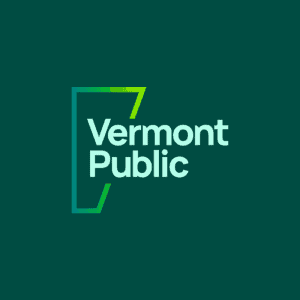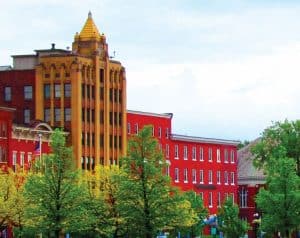Over the last fifteen years, Hartford, Vermont has undergone a quiet but impressive transformation, reflecting the vision of its residents and meeting the needs of the community. Its village center—White River Junction—now hums with new life in the form of boutique shops, a Turkish bakery, seasonal flower stand and even a prohibition-style restaurant.
Powered in large part by TIF, Hartford stands as a model for how strategic public investment, thoughtful planning, and community collaboration can revitalize a downtown.
It started with a single block
“We started thinking about downtown renewal as far back as the mid-1990s,” recalled Lori Hirshfield, Director of Planning and Development. “It began with one block and built from there.”
Railroad Row is where it all started. When a property owner agreed to a redevelopment project if the town handled the necessary infrastructure upgrades, Hartford agreed. Leveraging state grants and local support to remediate the site, realign streets, and build a park, Hartford set the stage for future revitalization.
By 2008, it was made clear that Hartford needed a more formal strategy, especially to replace century-old water and wastewater infrastructure. That led to the White River Junction Village Revitalization Plan and, in 2010, the town’s designation as a Growth Center. The TIF District was officially established in 2011.
Local partnerships are the key to success
A key to Hartford’s success was early buy-in from local property owners and businesses. “They were partners from the beginning,” Hirshfield said. “They helped shape the plan, worked with us on financial projections, and spoke out in support before the Selectboard and VEPC.”
Creative public outreach also played a role. Artists from the Center for Cartoon Studies designed visual explainers that walked residents through how TIF worked. “They showed how revitalization increases property values, creates jobs, and benefits everyone—not just those in the district,” Hirshfield said.
Challenges and Course Corrections
Hartford’s progress hasn’t been without setbacks. The recession stalled its first major redevelopment project when a developer pulled out. “It took until 2014 for another developer to step in,” said Hirshfield.
Then came COVID-19, which brought project delays and cost increases. “We’re not going to be able to build everything in the original plan,” Hirshfield acknowledged. “But the vision still holds.”
The results speak for themselves
New businesses have blossomed, adding to the charm of White River Junction. Eateries such as Cappadocia Cafe, a Turkish bakery offering traditional pastries as well as Turkish tea and coffee have opened in recent years. There is also REDCAN, a contemporary, prohibition-style restaurant that offers American cuisine, all sourced from local ingredients. And let’s not forget James Beard finalist for Outstanding Bar, Wolf Tree, which opened in 2019.
Retail has also seen a resurgence. Cover to Cover Books, a volunteer-run bookstore, opened in 2023. Proceeds from book sales are used to support the efforts of Cover Home Repair, a nonprofit that winterizes homes for low income residents. Other retail establishments, including POST, a boutique stationery store, and Wilder Flowers, a seasonal flower farm that sells bouquets from a farm stand also add to the character of the downtown. A cornerstone establishment, Revolution, continues to thrive with the influx of increased foot traffic in the downtown.
“We’ve created an expectation for businesses to be in these spaces,” said Hirshfield. Those businesses go beyond shopping and dining. In 2015, Northern Stage opened its new home, the Barrette Center for the Arts, which puts on several award-winning performances each year. “The creative economy is alive and present every place you walk. It’s a place you want to be,” Hirshfield continued.
The financial results have been substantial. As of 2018, the town had invested roughly $13 million in infrastructure, which spurred more than $60 million in private investment. The district’s base value nearly doubled—from $32 million at its inception to $55.5 million within just a few years—and it’s projected to hit $79 million upon full buildout.
Organic growth on the horizon
As its 2026 borrowing deadline approaches, Hartford is focused on completing a final round of infrastructure projects and maintaining the momentum it has built. A reinvigorated downtown business association is playing a key role in sustaining post-development stewardship and civic pride.
“The amazing thing is that you can literally see the plan being built,” Hirshfield said. “Some things look a little different than the early renderings, but the core vision is there. The community made this happen.”
With private development beginning to occur organically, Hartford’s TIF District may soon become self-sustaining. “We’ve doubled the tax revenue downtown in about 10 years,” Hirshfield said. “This wouldn’t have happened without the TIF.”
For more information, visit the Rutland 360 website: https://www.rutlandvtbusiness.com/tax-increment-financing/ or email Ed Bove ([email protected])
The Rutland City Task Force and Rutland 360 is a collaborative initiative led by the Rutland Redevelopment Authority, the City of Rutland, Chamber & Economic Development of the Rutland Region, and the Downtown Rutland Partnership. Together, these stakeholders have developed the Rutland City TIF District Master Plan, a strategic effort to drive economic growth and revitalization in our city.




